Even though there’s still a lot of ambiguity surrounding electric vehicles, international car makers are rapidly expanding their ranges with fresh hybrid and electric options.
Robust sales in China along with growing acceptance in Europe have been spurred (or perhaps better stated as driven?) by the introduction of several more budget-friendly alternatives, which has made electric transportation increasingly accessible to the general public.
Even within the US, significant doubt exists regarding the future trajectory of battery electric vehicles due to Trump’s imposed tariffs And despite the overall negative attitude toward electric vehicles at The White House, sales are expected to increase by 16% in the U.S. in 2025, as projected by research firm Rho Motion (via). Reuters ).
More significantly perhaps, the globe's largest car manufacturers are currently unveiling remarkable vehicles, even as they abandon traditional internal combustion engines in preference for electric motors and battery packs.
The much-lauded Renault 5 E-Tech , for example, has already bagged numerous awards and accolades in Europe, while Kia’s massive EV9 An electric SUV claimed the World Car of the Year honor towards the close of 2024; meanwhile, the Hyundai Ioniq 5 N won both the World Performance Car award. Additionally, the all-electric Volvo EX30 took home the trophy for World Urban Car.
Far from being slightly weird outsiders, today’s crop of electric vehicles are genuinely some of the best cars on sale – period. Having driven plenty in the last year, these are the eight that have impressed me the most.
8. Mini Cooper Electric
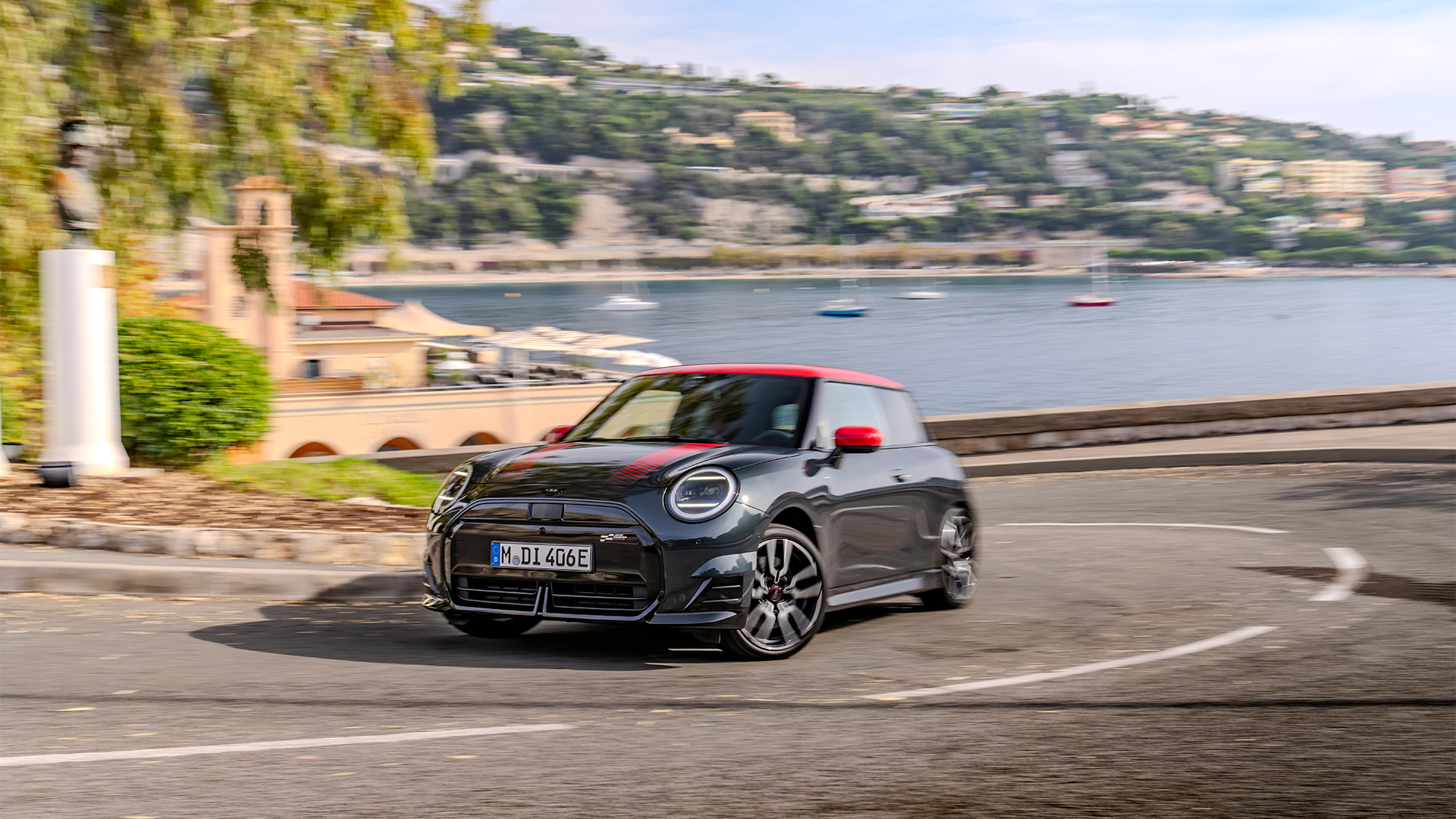
Simply put, Mini's second attempt at electrically revamping its iconic hatchback has proven far more successful compared to its initial effort.
Gone are the tiny battery packs, eye-watering price tags and unusable range, as we usher in 250 miles of electric motoring, faster charging speeds and revised exterior and interior styling. In fact, the inside of Mini's latest electric model is a real highlight .
As a nod to Sir Alec Issigonis' original 1959 Mini, the BMW Group has added a massive circular touchscreen display that takes care of all the vehicle's functionality and brings a little character to proceedings.
It's called the Mini Interaction Unit (MIU for short) and it can be used to flick between the various Mini 'Experiences', which essentially transform the display and interior ambience from a racy Go-Kart to a retro, almost analogue set-up at the flick of a brilliantly tactile toggle switch.
Everything runs on the latest BMW Group operating system, version 9, which is built upon the Android Open Source Project (AOSP) software suite. This makes it highly responsive and equipped with several impressive features such as displaying real-time camera feeds at intersections and integrating navigation instructions and lane guidance into its digital interface seamlessly.
Owners can indulge in various games on the screen due to AirConsole compatibility, allowing for an enjoyable gaming session. Angry Birds while the vehicle charges, which takes around an hour and 20 minutes from faster public outlets.
However, what’s even more significant is that it performs and steers just like a genuine Mini, offering quick acceleration and accurate handling that make it enjoyable to maneuver when the road becomes winding.
- Read more: I tested Mini's latest-generation OLED infotainment system, and it shows that being digital doesn’t necessarily mean losing personality.
7. Polestar 4
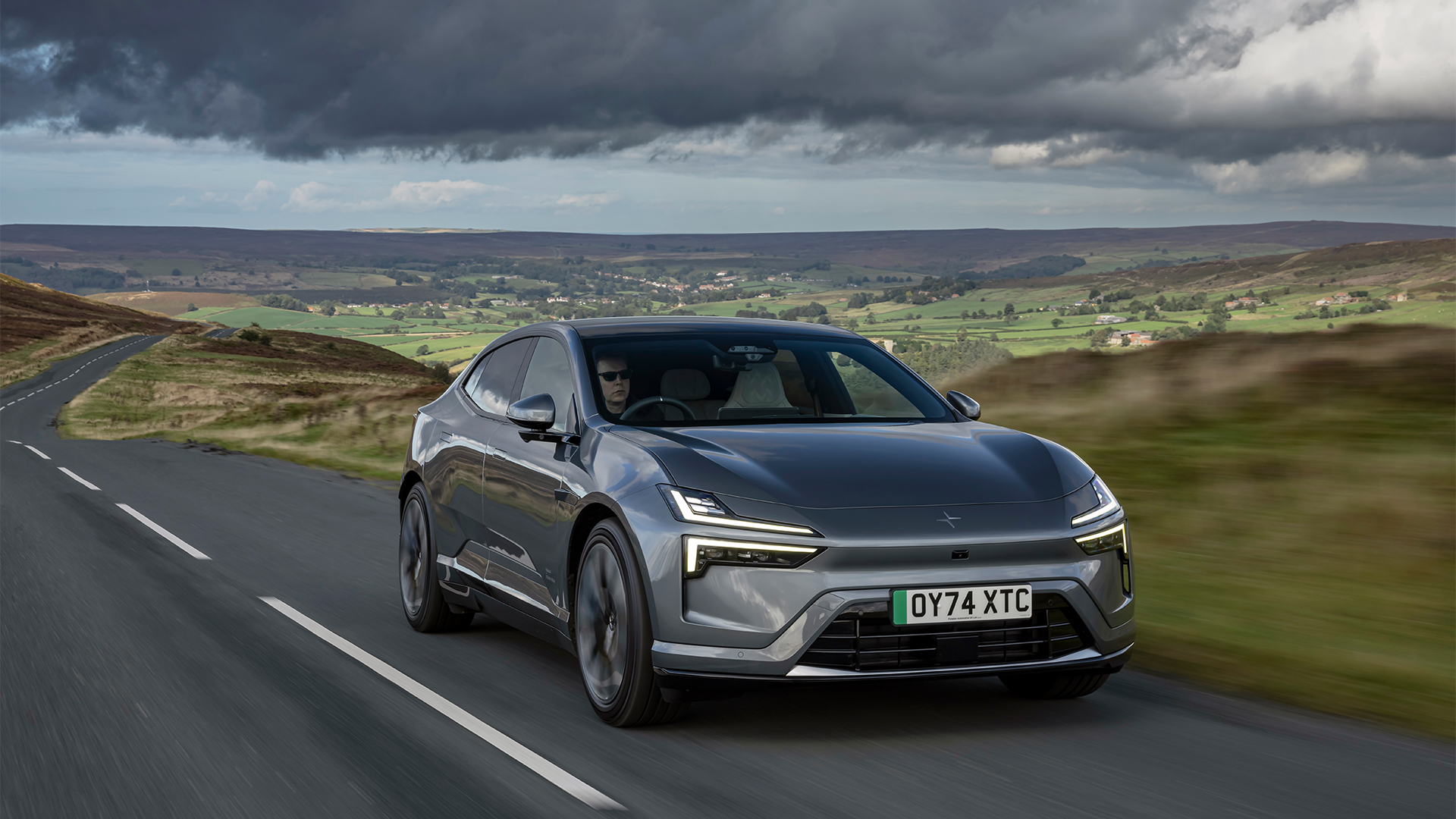
Similar to Kia, Polestar has quickly broadened its electric vehicle offerings over the last year, transforming from a single-model brand to one with a trio of vehicles. The introduction of the Polestar 3 and 4 continues where the Polestar 2 sedan left off.
Both SUV crossovers, the Polestar 4 arguably became the talk of the town mainly due to being the initial production vehicle to eliminate the rear window in favor of relying exclusively on rear-view cameras and monitors.
Some doubts linger regarding the ease-of-use of the design since pets may be reluctant to travel in the dimly lit trunk area, and drivers might find it challenging to rely on a screen for monitoring the view typically provided by the rearview mirror. Nonetheless, the appearance is appealing and stands out uniquely among currently available vehicles.
There’s a monstrous 100kW battery pack available, along with the choice between a single 200kW motor delivering 272 horsepower or opting for the dual-motor setup which delivers an impressive 400kW.
The stronger choice offers exceptional speed on the highway and provides a smooth ride due to its adaptive dampers. However, even the model with a 200kW output seems robust and delivers an impressive range of 385 miles before requiring a recharge.
Top-up times reach an 80% charge from 10% within about 30 minutes using DC fast charging. The car also comes equipped with the Android Automotive OS, which includes built-in Google Maps integrated with the vehicle’s systems. This allows for smart navigation that considers your battery level and suggests the most energy-efficient stops along your route.
And since this is a Polestar – embodying the essence of Swedish sleekness – it comes equipped with elements such as a controlled breathing application within the entertainment system and an extensive electronically tinted sunroof. This innovative rooftop adjusts between blocking the sun’s harsh rays and allowing plenty of natural light inside, enhancing the spacious Scandinavian ambiance during your drive.
While it isn’t inexpensive, costing $56,000 / £59,990 / AU$81,500, this makes it a direct competitor to the recently refreshed model. Tesla Model Y .
- Read more: I took the new screen-centric Polestar 4 for a spin, and its absence of a rear window is far from the only aspect it will be noted for.
6. Dacia Spring
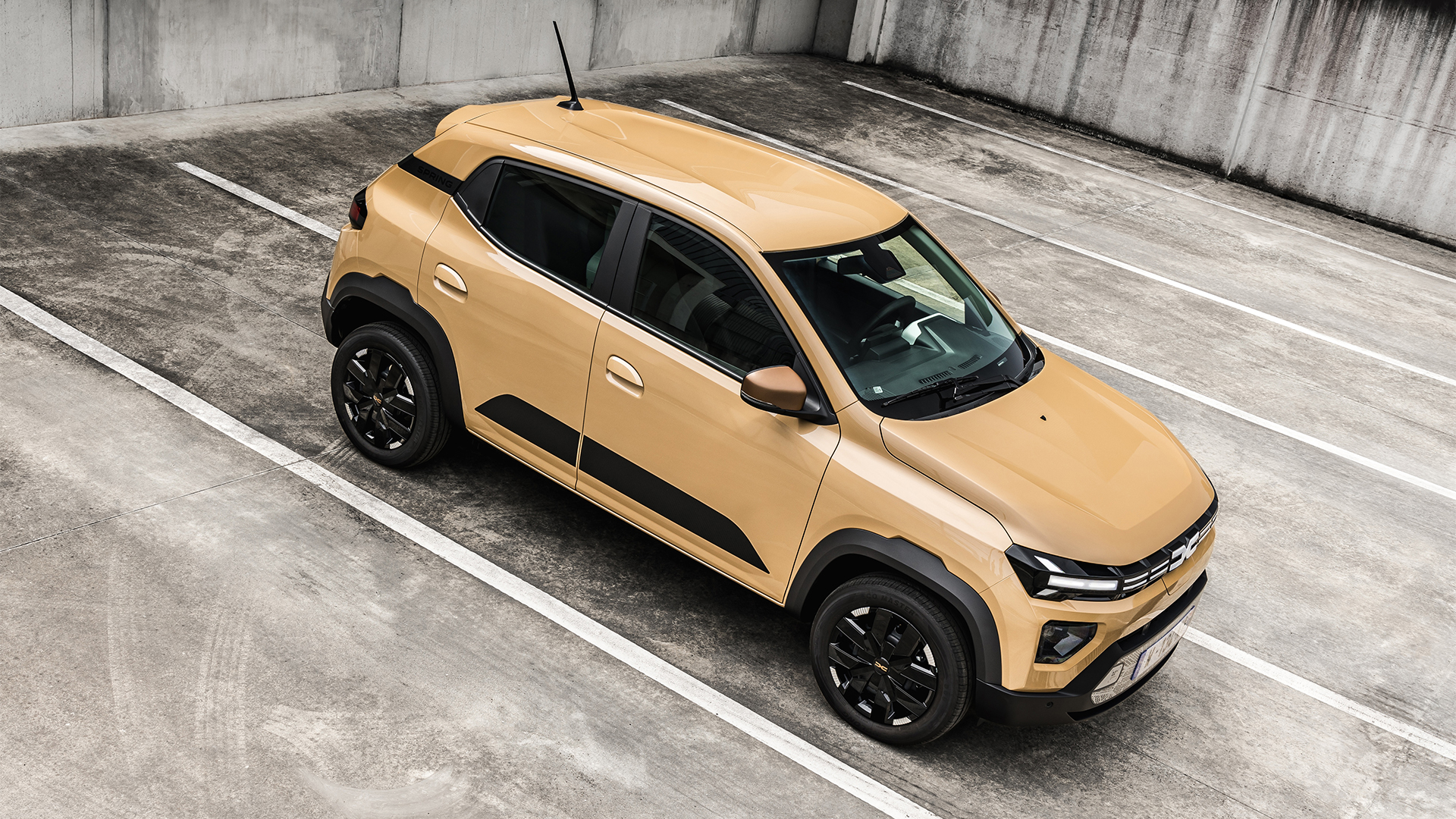
The constant criticism directed at electric vehicles is that they tend to be accessible only to the upper echelons of society. Many "affordable" versions have previously had price tags exceeding $50,000 / £50,000 / AU$80,000.
Then, along came the Dacia Spring , a working-class icon providing purely electric driving at an affordable price of £14,995 (approximately $19,000 / AU$30,000). For those who appreciate simplicity, the Spring checks numerous boxes.
Starting off, it has a weight of only 951kg (2,096lbs) and comes equipped with a small 26.8kWh battery which provides approximately 140 miles of range per full charge in the somewhat stronger 48kW motor variants. However, these still lose power at speeds over 78mph.
Before I tested the Spring, Dacia’s public relations team believed it was necessary to set my expectations—essentially positioning the vehicle as an affordable electric car primarily suited for urban commutes and not much more than that.
However, I disregarded everything and promptly embarked on a substantial 140-mile round trip without giving it much thought. Can you believe it? It performed flawlessly.
Certainly, you'll need to adapt to the fact that the Spring is one of the slower cars on the road during springtime, yet it remains capable enough for highways and offers a decent ride quality. It may be noisy, though it does come equipped with heaters, power windows, and adjustable side mirrors. Isn’t that quite sufficient?
Spend slightly more and the provided infotainment system isn’t bad at all, offering Apple CarPlay and Android Auto, as well as a reversing camera and parking sensors. But you don’t really need them, seeing as the Spring isn’t much bigger than an eBike.
Above all else, charging from a 7kW wallbox at home takes just four hours (although a 30kW max charging speed makes public charging long and boring) and it’s an absolute blast to drive. Small, nippy and reminiscent of the basic hatchbacks of the 1980s.
Fun, cheap cars are essential for keeping large swathes of the population moving and, so long as you don’t mind going back to basics, the Dacia Spring nails its brief and then some.
- Read more: I've experienced driving the Dacia Spring, and it offers basic yet top-notch affordable electric transportation.
5. Hyundai Ioniq 9
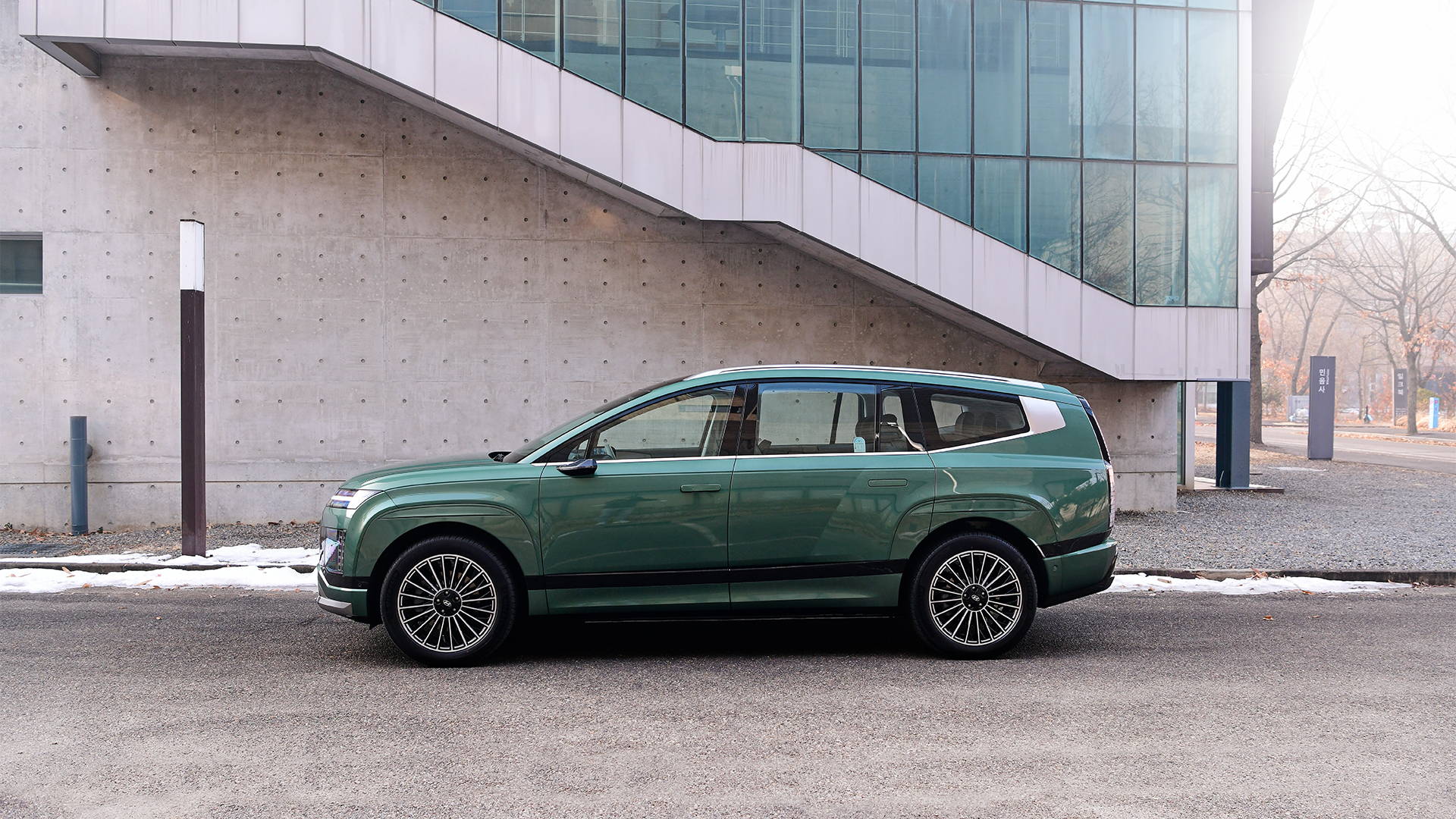
If you're looking for a large electric vehicle designed to transport many passengers, there are several options available nowadays. Kia’s EV9 is excellent, the Volvo EX90 Is fashionable, though somewhat lacking refinement in some areas, and the VW ID Buzz continues to be among the most trendy methods for traveling without relying on fossil fuels.
As mentioned, the Hyundai Ioniq 9, Which I used in South Korea not too long ago. , is arguably the standout among them, combining innovative design with smart, functional features and an electric range that enthusiastically invites long drives.
It can be configured with either six or seven seats internally, where the six-seater feels more akin to flying business class on Emirates Airlines rather than squeezing into a usually tight passenger vehicle.
At present, the only confirmed pricing is in South Korea, where it costs 67 million won. The figures for other markets are still being determined. However, even with estimates around £65,000 ($84,000/AU$133,200) provided by insiders, this seems like quite an attractive deal considering what you get.
The top-of-the-line Calligraphy model I managed to obtain from Seoul to Busan came equipped with high-definition displays at the back, seven exceptionally comfy seats, and an interior adorned with upscale features like brushed aluminum accents and durable yet luxurious leather-like materials.
It's not really a powerhouse when it comes to performance (you need Hyundai Ioniq 5 N If you prefer that, the Ioniq 9 can still switch modes, with the top-of-the-line Performance AWD version featuring dual 160kW motors delivering a total of 430 horsepower to all four wheels.
However, this model is more of a docile powerhouse, content with smoothly sailing down the highway for up to 335 miles thanks to its massive 110.3 kWh battery pack. Even when it comes time to recharge, filling up from 10% to 80% only takes about 24 minutes using a 350 kW charger.
- Read more: I have test-driven Hyundai’s sizable Ioniq 9, and it stands as the most opulent electric vehicle the company has produced to date.
4. Tesla Model 3
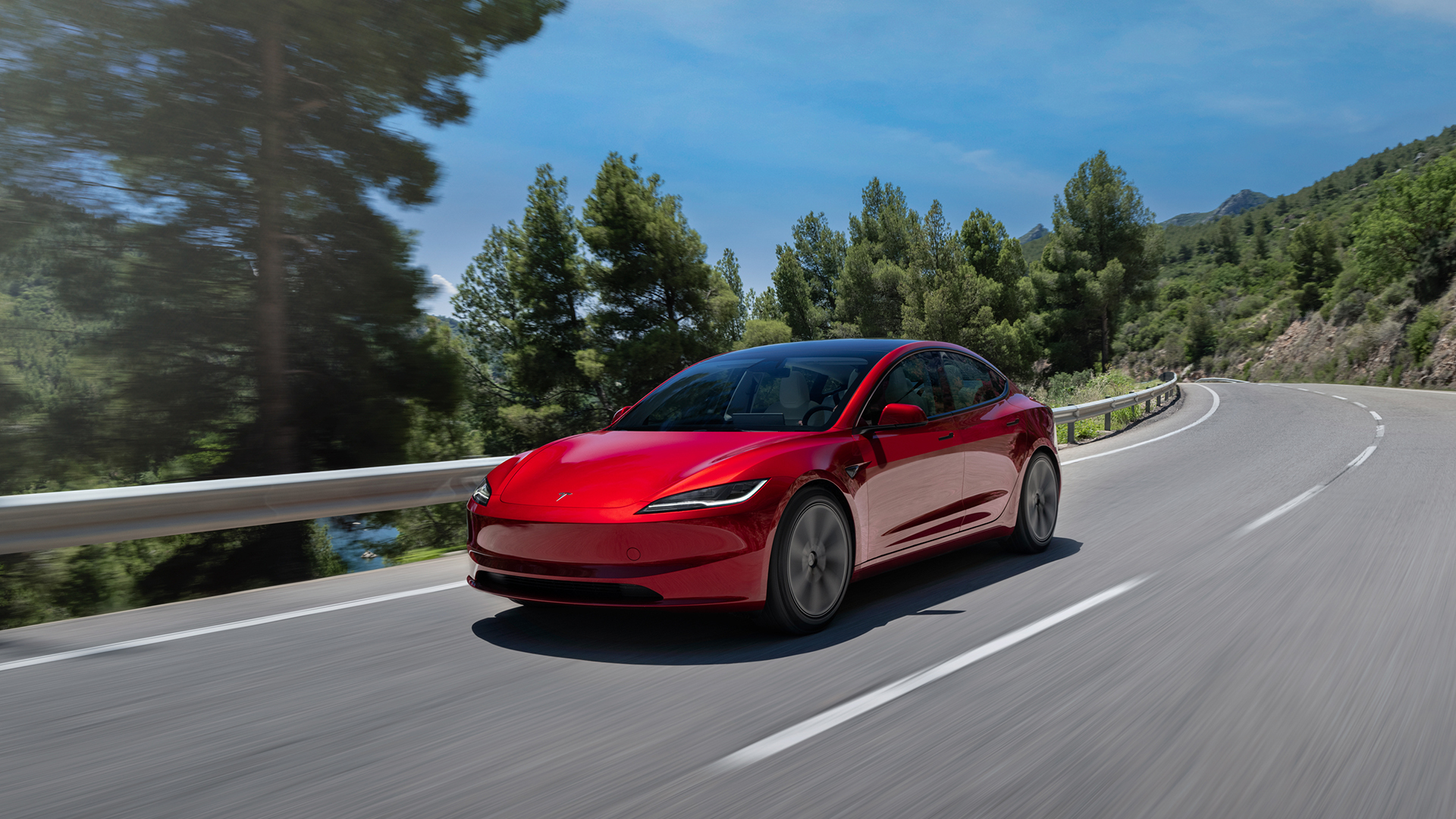
Frankly, this might not be the ideal moment to tout anything associated with Elon Musk, yet the revamped Model 3 stands as both the finest Tesla I've had behind the wheel of and one of the top electric vehicles currently available.
However, before I find myself facing an irate crowd, I should acknowledge that first, I comprehend why numerous current Tesla owners wish to part ways with their cars, and secondly, I concur with those who continue to think the Model 3 possesses 'dynamically' identifiable issues.
If you can get over the fact that a Tesla still isn’t a true 'driver’s car', it’s difficult not to be impressed by its performance as an EV – seemingly dealing with all those things that make daily life with an electric vehicle a pain in the behind.
The infotainment offering is unrivaled (even if a little bit too much is committed to touchscreen), the charging experience is a joy and, thanks to massive leaps in overall refinement and build quality, the latest Model 3 feels altogether more comfortable and more premium inside.
Tesla’s app is, unsurprisingly, one of the best in the business, making it easy to locate charge points, check on charge status and remotely fiddle with car settings.
On top of this, rear-seat passengers benefit from entertainment that is typically found only in more luxurious models that cost a lot more. In fact, the overall interior ambience is airy and welcoming, making it a keen choice for families, or those with young ones.
Fortunately, all these updates have also been applied to the Model Y But will this suffice to pull Tesla out of its present difficulties? The redesign aims for a comparable visual refresh.
I truly hope so, as the company largely initiated the electric vehicle revolution and its offerings are currently more advanced than ever before. It would be unfortunate if this innovative approach isn’t extended to the latest Model S, Model X, and, let’s venture to suggest, even the that new Roadster We've often been promised this for a long time.
3. Maserati GranCabrio Folgore
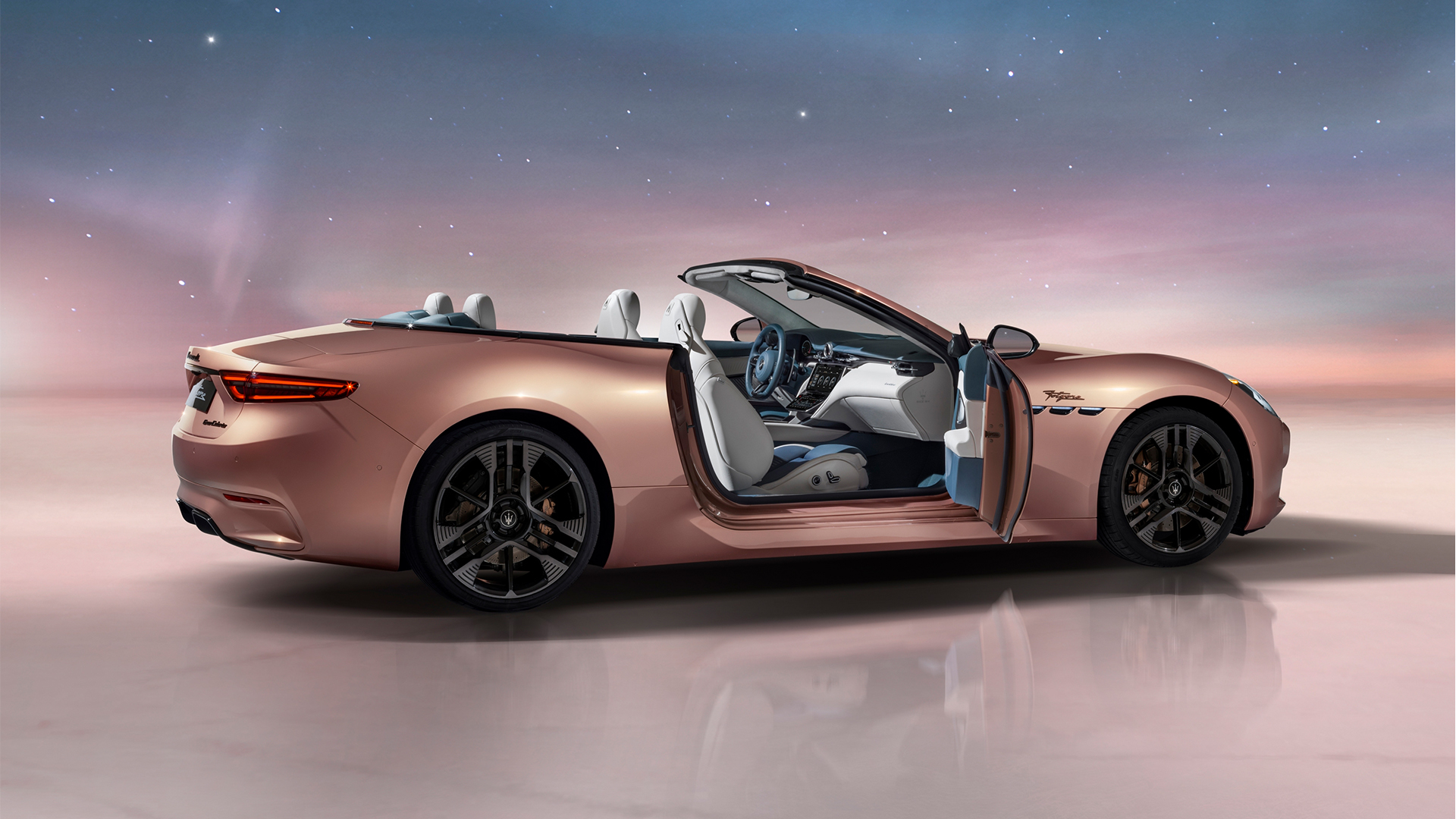
Similar to Porsche, Maserati is another brand that has ICE-d its EV plans , due to insufficient trust from its parent company, Stellantis.
It's simple to grasp why hypercar enthusiasts wouldn't want to see the powerful MC20 shed its twin-turbocharged V6 'Nettuno' engine. However, when it comes to the more laid-back GranCabrio, embracing an all-electric drivetrain doesn't seem like such a far-fetched idea.
It’s quite the opposite, considering the vehicle boasts a 92.5kWh battery along with three 300kW electric motors, resulting in outstanding acceleration. Thanks to an overboost feature, the maximum output reaches up to 818 horsepower, enabling a 0-62 mph run in just 2.8 seconds. Truly astonishing.
However, the sleek and lavish Maserati isn't solely focused on achieving high speeds in a straight line or conquering twisty mountain roads. This vehicle excels equally when cruising leisurely around Lake Como—or the environs of Surrey in the UK, where I had the opportunity to test it out.
Despite the power, it is a pussycat to drive and the folding fabric roof, which drops in just 15 seconds with a swipe of a finger on a neat secondary touch screen, adds an additional element of opulence.
But with the roof in place, the refinement is excellent, with the near-silence of the cabin only occasionally punctuated by the hum of the neck warmers blowing hot air onto your nape and futuristic performance noises when the right foot is buried.
Stunning both internally and externally, Maserati’s inaugural attempt at an electric convertible (MG stands as the only genuine competitor currently) is truly remarkable.
It’s simply unfortunate that with an approximate range of 260 miles, this vehicle doesn’t measure up to typical Grand Tourers. Moreover, due to its steep price tag of £185,610 ($206,995/roughly AU$328,000), very few people will have the opportunity to enjoy driving it.
2. Porsche Macan EV
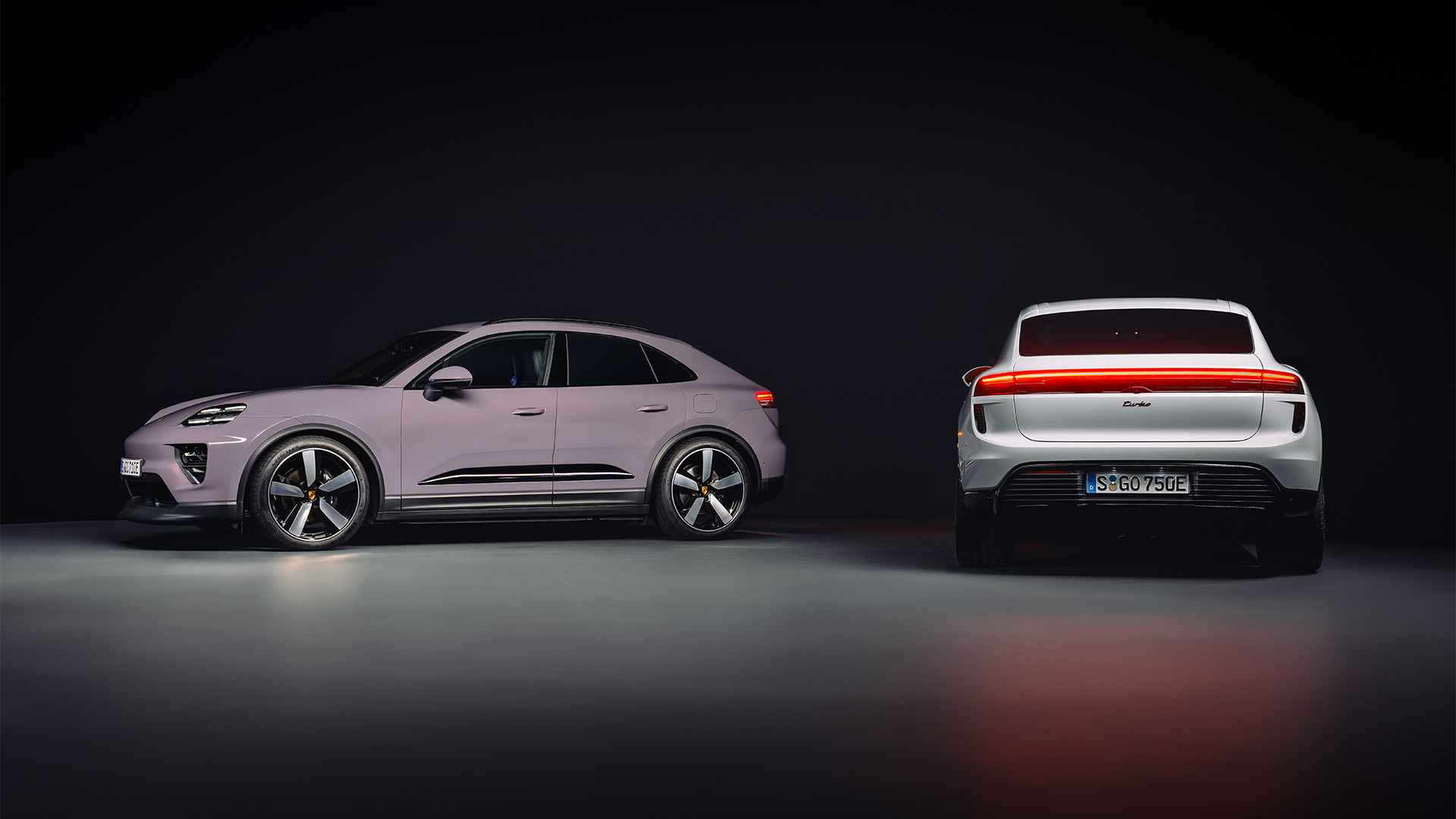
Recently, Porsche has been making news primarily due to sluggish electric vehicle sales and a decline in interest for its hybrid and electric models.
To such an extent, the German brand has stated that they are contemplating fitting combustion engines into models for which it initially planned to be purely electric-only.
It seems like a regression, with the most recent development being Macan EV is excellent, boasting Porsche's latest in-car software, impressive range and Turbo variants that will embarrass most supercars in a drag race.
Boasting 584 horsepower available (which can go up to 639hp using Launch Control), the Macan Turbo is a powerful vehicle that remains suitable for daily use thanks to its comfort and functionality. It offers ample room for five occupants, along with the choice of adding another touchscreen display for the driver and front passenger.
More budget-friendly and more effective models are available, yet even the high-end Turbo can travel up to 336 miles per charge. It also boasts a peak charging capability of 270kW for quick replenishment times.
Even more remarkable is the infotainment system, built on Android Automotive OS, offering incredibly quick responses. It boasts an extremely rapid boot time and can swiftly map out even the most intricate transcontinental journeys (including suggested recharge points) within moments.
Porsche is also the first manufacturer to introduce greater levels of Apple CarPlay Integration into its vehicles means you can adjust car settings without leaving the ecosystem—or easily switch the DAB radio station.
However, its dedicated smartphone application stands out as well, offering features like planning routes directly on your phone and sending them to the vehicle, controlling temperature settings from afar, scheduling charging times, and analyzing driving statistics.
Unfortunately, the primary obstacle for many will be the cost, as the Copper Ruby Metallic Turbo model I evaluated was priced at £118,761 (approximately $153,500 or AU$243,200) once all the options were selected. Yikes.
- Read more: Inside the latest Porsche Macan – the Android-driven electric vehicle set to challenge Tesla
1. Kia EV3

Kia, along with its sibling company Hyundai, was one of the initial automakers beyond Tesla to wholeheartedly embrace electrification, committing entirely to this shift. current line-up The reflection of vehicles highlights this reality.
The EV6 remains, and has always been, an innovator, while the EV9 defeat Volvo and Range Rover to become the world's first luxury seven-seater SUV powered entirely by electricity.
An even smaller EV2 model will be released next year, and several markets are already experiencing the mid-size EV5 SUV – however, it was the The EV3 that earned top scores from me this year , simply because I thought it would seamlessly integrate into most drivers' lifestyles.
The robust, stormtrooper-esque design, along with the smart utilization of internal space and an attractive price point (£32,995 in the UK or approximately $35,000 upon release in the U.S. in 2026), makes it a practical daily driver without straining your finances.
Available with a 58.3 kWh or a more substantial 81.4 kWh battery pack, the EV3 can travel up to 267 miles or extend its range to 372 miles.
Even though it doesn’t include the speedy 800V electrical system found in the EV6 and EV9, this vehicle can still achieve a 20-80 percent charge in approximately 30 minutes using a quick charger.
Moreover, Kia demonstrates strong overall efficiency, with the projected range estimates proving reliable. This provides owners confidence that they can reach even their most far-flung destinations during extended drives.
In the electric vehicle market, where there was a significant gap for an accessible daily driver comparable to Volkswagen’s Golf in Europe or Honda’s CR-V and Toyota’s RAV4 in North America, Kia’s EV3 seems to fill this void effectively.
- Read more: I have driven the Kia EV3, and it’s one of the top electric cars currently available for many people.
You might also like
- The 6 top electric motorcycle concepts and releases unveiled at EICMA 2024
- Has the era of electric supercars come to an end? Several luxury car manufacturers, such as Aston Martin, have postponed their plans for electric vehicles.
- Tesla has announced plans for an update of the Model S and Model X later this year – here are 5 features I’m hoping they’ll include.

Post a Comment